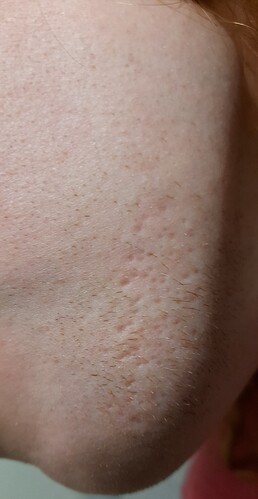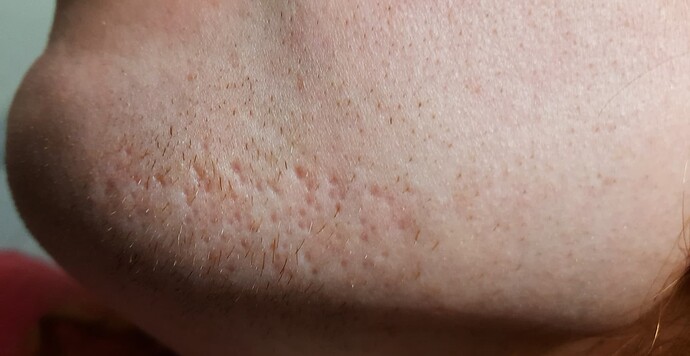Hi there, long time lurker but only just made an account.
My partner (trans redhead, very fair porcelain skin) got her first electrolysis session and it appears to have done some damage.
Could anyone please confirm this is atrophic scarring (pitting) with hyperpigmentation? I am trying to find out the correct terminology as we might see a dermatologist for support.
My partner is risk averse and is currently not willing to continue electrolysis at this stage due to the pitting/pigmenting (which my understanding is caused because of collagen rebuilding inside the follicle causing the skin to be pulled downward/inward). I did not have this issue during my treatments.
She is currently using topical silicone to see if it has any affect but we are going to probably delay any further attempts at electrolysis for 6-12 months to see if the situation resolves before doing a full clearance.
Before we go on a witch-hunt of overtreatment, the electrologist we saw is one that I have used for my entire body clearance and had no issues with, and the electrologist is also very risk averse and has halted future sessions until we see progress of healing or a resolution as she prefers to undertreat rather than overtreat. I sat in on this first session (as we ‘talk shop’ and chat about life) and I witnessed her start at ultra-low power and work her way up to until hair removal was achieved.
It may rather be that my partner’s skin is ultra sensitive rather than overtreatment, but if it does look like too much power I’d appreciate knowing this so we could maybe arrange a few-hair experiment at ultra low current or under different pulse conditions and see what happens.
Additionally, is there any references that might suggest galvanic might be more suitable? Photos are of 1 hour of trial treatment on Apilus unit, straight thermolysis.
Any advice is appreciated, thanks in advance!

